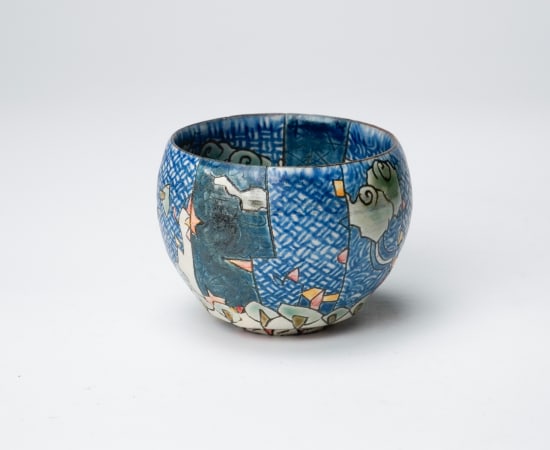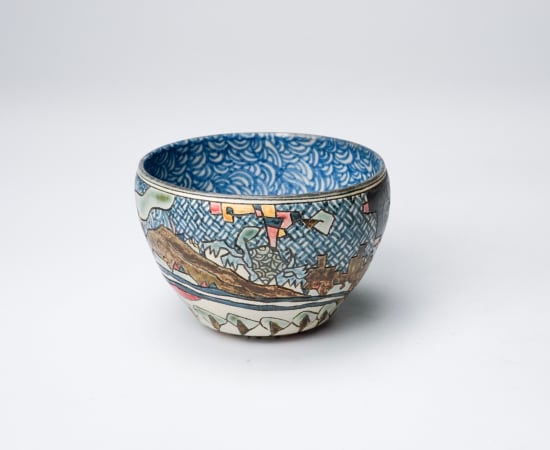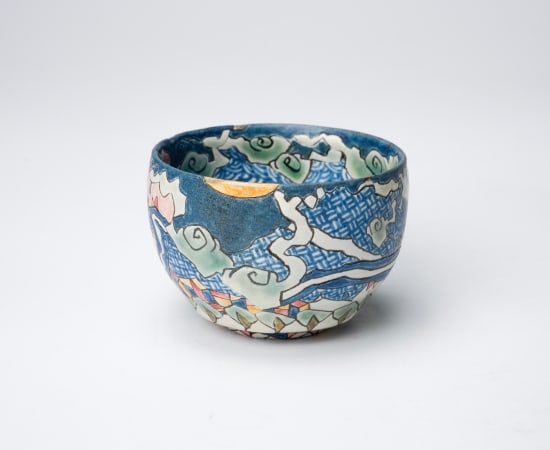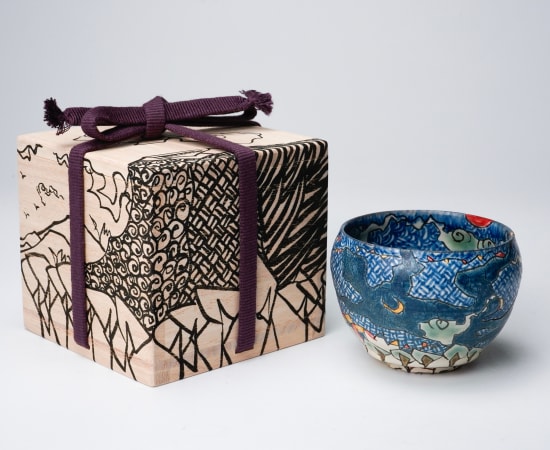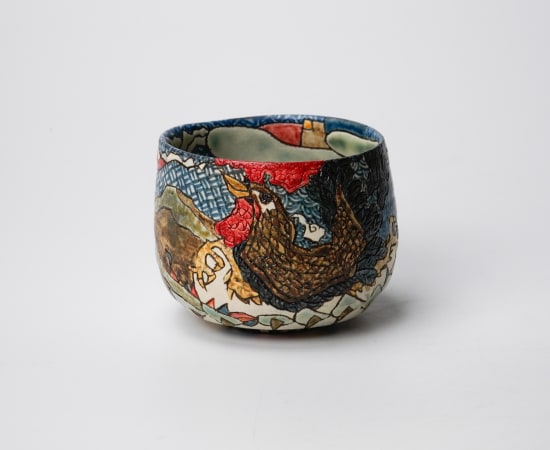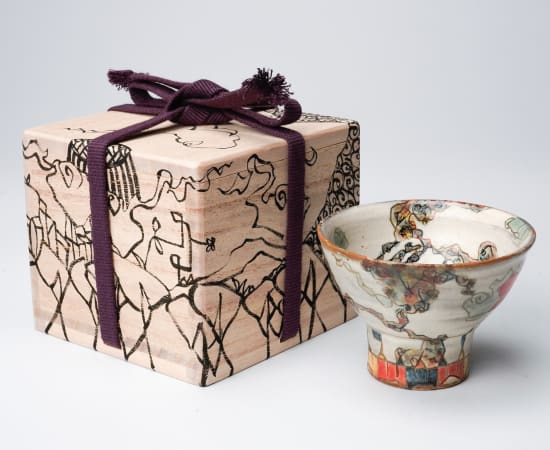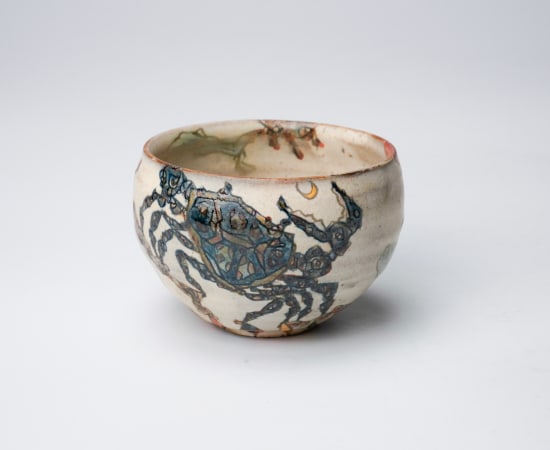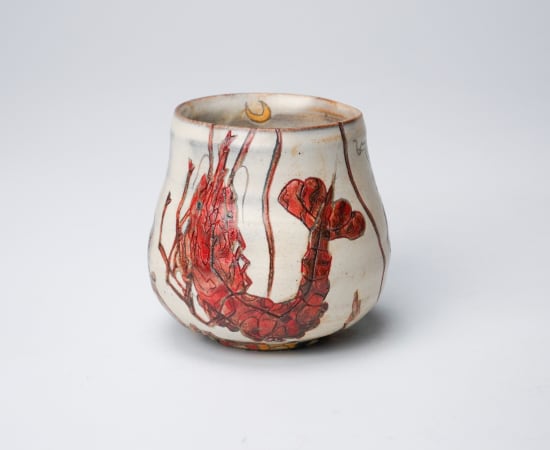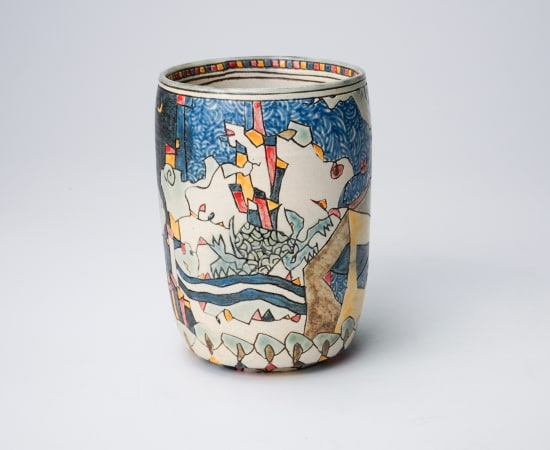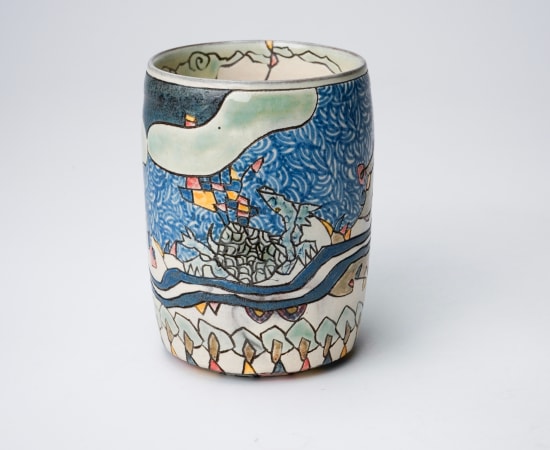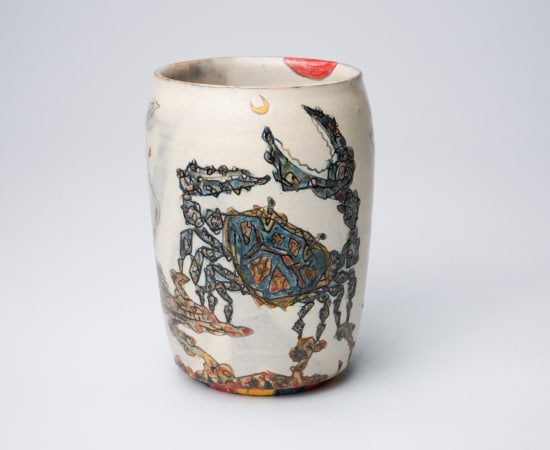Komago Tetsutaro is a contemporary artist and potter who specializes in decorative wares that draws influence from the rich tradition of Arita ware and Okinawan inspired subject matter. He is deeply intrigued by the potential of pictorial decoration and how it can be seamlessly integrated into contemporary motifs. This tradition finds its roots in the export cloisonné artistry of the Meiji period, a time when Western visual cultures, technologies, and two-dimensional art forms such as prints and etchings were making their way into Japan. As a result, depictions of mythical creatures and swirling clouds began to flourish in domestic export porcelain.
Komago's pieces exude whimsy, featuring intricate etchings on their surfaces and occasional embellishments with metallic gold or silver enamel. These polychrome creations evoke childhood memories, and particularly motifs from Okinawa which are themes with a long-standing visual tradition and history within Japanese decorative arts. Crabs, shrimps, birds, and the sea are drawn to life on his delightful vessels.
Particular attention can also be paid to the whimsical naturalism captured in his works, and the unique way he styles his accompanying tomobako (or, paulownia wood boxes).
